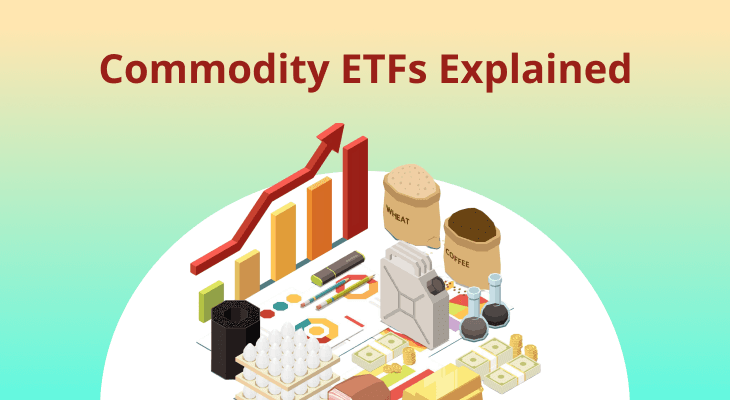
Multi-asset Allocation Funds: An Overview
Multi-Asset Allocation Funds go beyond traditional investment avenues, incorporating a mix of equities, debt, and other asset classes within a single portfolio. The primary objective is to harness the potential benefits of different assets while capitalising on their unique market dynamics, and balancing associated risks.
Multi-Asset Allocation Funds operate on the principle of dynamic asset allocation, adapting to evolving market conditions. By incorporating a mix of assets, these funds strive to achieve a balance between growth and stability, catering to the diverse risk appetites and financial goals of investors. In other words, these funds offer you the benefits of automatic diversification. Rather than having to navigate the complexities of doing this yourself, you can leverage the expertise of fund managers in allocating resources strategically. The flexibility of these funds allows for adjustments in response to market trends, making them well-suited for both conservative and growth-oriented investment strategies.
In these funds, a minimum of 10 percent is invested in equities, 10 percent in debt, and another 10 percent in a different asset class, which could be gold or real estate. Apart from the mandated 10 percent, fund managers have the flexibility to adjust allocations in varying proportions, providing these funds with a unique and adaptable characteristic.
Potential Pitfalls
While most Multi-Asset Allocation Funds boast of internal diversification without additional efforts on your part, it's important to understand that not all schemes are created equal or functional in the same manner. Some funds may claim diversification without truly offering exposure to a broad spectrum of asset classes. The fund manager plays a crucial role in deciding the asset-mix and allocation of resources within the fund. So, if a fund manager expects a bull-run in the near future, they are more likely to have a higher equity exposure. As a responsible investor, you should scrutinise the fund's underlying holdings, and carefully read the terms and conditions to ensure genuine diversification that aligns with your risk tolerance and financial goals.
It is equally important to recognise that although Multi-Asset Allocation Funds can contribute to diversification within the fund itself, they should not be perceived as a one-size-fits-all solution for your individual portfolio diversification. Each investor's financial landscape is unique, and the role of these funds is to complement rather than replace the diversification strategy tailored to individual needs and risk appetite.
Understanding the Integral Role of Fund Managers in Multi-Asset Allocation Funds
Multi-asset Allocation Fund Managers are like the captains steering the ship of this vessel. They play a vital and often underestimated role in shaping the fund's performance and ensuring its success. Here are a few of the critical tasks they perform and/or supervise:
Strategic Asset Allocation
Fund managers are akin to strategic planners, determining the optimal mix of assets within the fund. Their decisions regarding how much weight to allocate to equities, debt, and other instruments profoundly impact the fund's risk and return profile.
Dynamic Decision-Making
Market conditions are ever-evolving, and the fund manager's ability to make dynamic decisions is paramount. Their tactical adjustments in response to market trends, economic shifts, and global events can significantly influence the fund's performance over time.
Risk Management Expertise
Managing risks is an inherent part of a fund manager's role. They assess and mitigate risks associated with different asset classes, ensuring that the fund's overall risk aligns with investors' expectations and objectives.
Rebalancing Strategies
The art of rebalancing is a skill possessed by adept fund managers. They reallocate assets periodically to maintain the desired asset allocation, ensuring that the fund stays true to its intended risk and return profile.
Research And Analysis
Fund managers delve deep into research and analysis of various assets, industries, and market trends. Their insights drive informed investment decisions, helping the fund stay ahead in an ever-changing financial landscape.
Performance Tracking And Reporting
Beyond the day-to-day decisions, fund managers continually track the fund's performance. Their ability to transparently communicate this performance to investors through regular reports is vital for building trust and maintaining investor confidence.
Adherence To Investment Philosophy
Every fund manager operates with a distinct investment philosophy. Understanding and aligning with this philosophy is crucial for investors, as it defines the manager's approach to risk, market timing, and long-term objectives.
Experience And Expertise
Fund managers bring a wealth of experience and expertise to the table. Their understanding of market cycles, economic trends, and past investment landscapes equips them with valuable insights that can guide the fund through diverse market scenarios.
How Are Multi-asset Allocation Funds Taxed
To understand how mutual funds are taxed, we need to consider their average investment in stocks over the past 12 months, not just their current status. This is especially important for multi-asset allocation funds where the amount invested in stocks can change based on the fund manager's strategy.
So, if your fund scheme has less than 35% equity exposure, your short-term or long-term capital gains will be taxed as per your existing income tax slab rate. However, if the equity exposure of the fund is between 35-65%, then your short-term capital gains (STCG) tax will be as per your prevalent income tax slab. But, if you have held the units for over three years, then long-term capital gains (LTCG) tax will be applicable which is taxed at 20% with the possibility of benefits via indexation. Finally, if your fund has an equity exposure of 65% or person, then it is treated as an equity fund. As such, STCG tax is 15%. But if the holding period is one year or more, then the LTCG tax will be levied at 10% on gains exceeding ₹ 1 L.
Conclusion
In conclusion, Multi-Asset Allocation Funds stand as a dynamic investment strategy offering diversification and flexibility. However, you should approach these funds with discernment, recognising that their efficacy depends on the fund's actual diversification, understanding the role they play in an individual portfolio, and being mindful of the tax implications. Moreover, placing trust in the fund manager's expertise is paramount. By delving into these aspects, you can harness the full potential of Multi-Asset Allocation Funds, creating resilient and well-balanced investment portfolios tailored to your unique financial aspirations.
SIPs let you invest small amounts regularly, making it easier to stay consistent with your goals. With time, your money grows faster through compounding, helping you get the most out of your investments. Try our SIP Calculator to see how your money can grow and make smarter plans for your future.
FAQ
How are Multi-Asset Allocation Funds different from traditional mutual funds?
Multi-Asset Allocation Funds diversify across equities, debt, and other assets, providing a balanced approach to risk and return compared to single-asset-class funds.
How do fund managers adjust allocations in these funds?
Since Multi-Asset Allocation Funds allow flexibility beyond the minimum 10% allocation for each asset class, fund managers can dynamically adjust allocations based on market conditions and their strategic outlook.
Why does the equity allocation matter for tax implications?
Taxation depends on the average equity allocation over the past 12 months. Different tax rates apply based on whether the allocation is up to 35%, between 35-65%, or above 65%.
Are Multi-Asset Allocation Funds suitable for conservative investors?
Yes, these funds offer a mix of assets, making them suitable for conservative investors seeking diversification and stability in their portfolios.
Can I expect regular income from Multi-Asset Allocation Funds?
Yes, these funds can provide regular income, especially if they have a significant allocation to debt instruments, making them suitable for income-oriented investors. You will need to choose the right fund that provides the option of income payout.
How does the fund manager's role impact the performance of these funds?
Fund managers play a crucial role in strategic asset allocation, dynamic decision-making, and risk management, significantly influencing the fund's overall performance.
What should I consider when evaluating Multi-Asset Allocation Funds for investment?
Consider the fund manager's expertise, the fund's historical performance, and whether the asset allocation aligns with your risk tolerance and financial goals.
Are there any tax benefits associated with long-term investments in these funds?
Yes, for equity allocations above 65%, long-term gains (holding for more than one year) are taxed at a favourable rate of 10%, provided gains exceed Rs 1 lakh.


